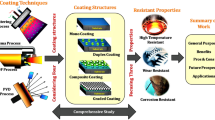Abstract
„Thick film technology” traces its ancestry to three sources: the preparation of decorative ceramic glazes, the fabrication of ceramic-to-metal seals, and the development of evaporated or sputtered “thin films” for electronic applications. Today, “thick films” are often the most reliable and also the cheapest route for satisfying numerous requirements in the functional packaging of semiconductor devices, and in related areas in microelectronics. The technology of thick film developments is heavily oriented toward problems related to multiphase structures and to interfaces. Typical thick films are essentially glass/metal composites, similar to the “cermets” which were so popular about a decade ago in attempts to develop structural materials for high temperatures. Micrographs and electron microprobe tracings will be shown to illustrate typical structures, and the defects occurring in them. Soldering, brazing, thermocompression bonding, ultrasonic bonding, eutectic die bonding, and several variations of these techniques are used for attaching devices and/or input-output connections to ceramic substrates via thick films. The interface problems associated with the sequential bonds generated in such processes are of great interest in the development of thick film compositions.
Similar content being viewed by others
Author information
Authors and Affiliations
Rights and permissions
About this article
Cite this article
Kelemen, D.G. Metallographic aspects of thick film technology. Metall Trans 1, 667–677 (1970). https://doi.org/10.1007/BF02811594
Issue Date:
DOI: https://doi.org/10.1007/BF02811594




